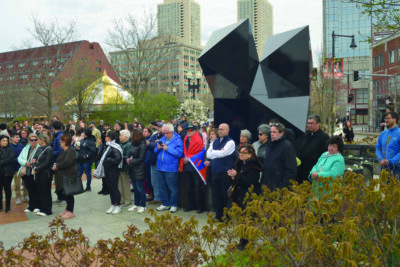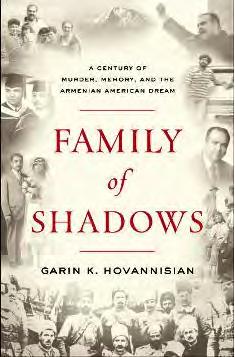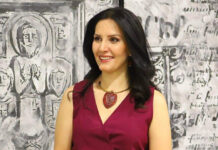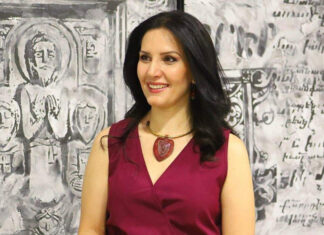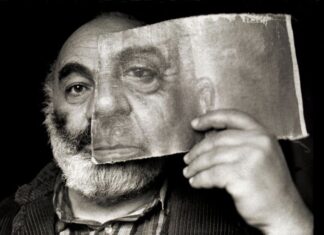By Daphne Abeel
Special to the Mirror-Spectator
Family of Shadows: A Century of Murder, Memory, and the Armenian-American Dream by Garin K. Hovannisian. HarperCollins. 272 pp. $27.99. ISBN 978-0-06-179208-3
This clearly partisan and impassioned family biography recounts the sufferings, the strivings and the achievements of four generations of a family that has made its mark, most particularly, in the areas of Armenian scholarship and Armenian politics.
The Hovannisian family, hailing from the village of Bazmashen, had a son, Kaspar, who experienced all the horrors of the Armenian Genocide. Driven from his home by the Turks, he is beaten by the Kurds yet is befriended by one of them. After wandering in the desert alone, he escapes, in 1916 to Russian Armenia. He maintains himself doing various low-level jobs and finally comes to the town of Garin in Western Armenia where he meets many other Armenian refugees and learns to become a soldier and eventually joins General Antranig’s army. Antranig, immortalized in the annals of Armenian history for his fierce battles against the Turks, eventually dispersed his army in the face of overwhelming opposition and Kaspar once more takes up his wanderings in Soviet Armenia, as the hope of an independent Armenia is eventually snuffed out in the machinations of the Great Powers.
In 1920, Kaspar makes his way to Le Havre and boards a ship headed to the United States. Once at Ellis Island, he changes his name from Gavroian to Hovannisian and finds a job in a shoe factory in Chelsea, Mass. Soon, with the help of a cousin, he moves to Tulare, Calif., a town that more closely resembles the homeland he left, and which is populated by many Armenians, probably for the same reason. He is drawn into politics and allies himself with Armenian Revolutionary Federation (ARF) and learns the distinctions between it and other parties, particularly the Ramgavars.
